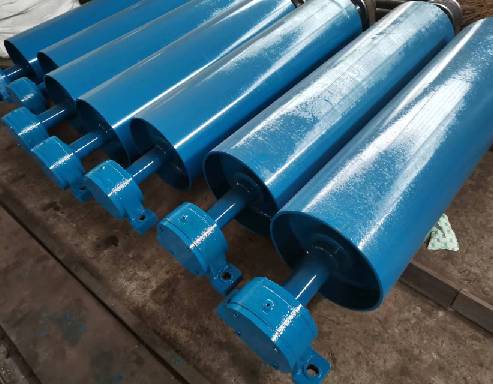 Afrikaans
Afrikaans  Albanian
Albanian  Amharic
Amharic  Arabic
Arabic  Armenian
Armenian  Azerbaijani
Azerbaijani  Basque
Basque  Belarusian
Belarusian  Bengali
Bengali  Bosnian
Bosnian  Bulgarian
Bulgarian  Catalan
Catalan  Cebuano
Cebuano  Corsican
Corsican  Croatian
Croatian  Czech
Czech  Danish
Danish  Dutch
Dutch  English
English  Esperanto
Esperanto  Estonian
Estonian  Finnish
Finnish  French
French  Frisian
Frisian  Galician
Galician  Georgian
Georgian  German
German  Greek
Greek  Gujarati
Gujarati  Haitian Creole
Haitian Creole  hausa
hausa  hawaiian
hawaiian  Hebrew
Hebrew  Hindi
Hindi  Miao
Miao  Hungarian
Hungarian  Icelandic
Icelandic  igbo
igbo  Indonesian
Indonesian  irish
irish  Italian
Italian  Japanese
Japanese  Javanese
Javanese  Kannada
Kannada  kazakh
kazakh  Khmer
Khmer  Rwandese
Rwandese  Korean
Korean  Kurdish
Kurdish  Kyrgyz
Kyrgyz  Lao
Lao  Latin
Latin  Latvian
Latvian  Lithuanian
Lithuanian  Luxembourgish
Luxembourgish  Macedonian
Macedonian  Malgashi
Malgashi  Malay
Malay  Malayalam
Malayalam  Maltese
Maltese  Maori
Maori  Marathi
Marathi  Mongolian
Mongolian  Myanmar
Myanmar  Nepali
Nepali  Norwegian
Norwegian  Norwegian
Norwegian  Occitan
Occitan  Pashto
Pashto  Persian
Persian  Polish
Polish  Portuguese
Portuguese  Punjabi
Punjabi  Romanian
Romanian  Russian
Russian  Samoan
Samoan  Scottish Gaelic
Scottish Gaelic  Serbian
Serbian  Sesotho
Sesotho  Shona
Shona  Sindhi
Sindhi  Sinhala
Sinhala  Slovak
Slovak  Slovenian
Slovenian  Somali
Somali  Spanish
Spanish  Sundanese
Sundanese  Swahili
Swahili  Swedish
Swedish  Tagalog
Tagalog  Tajik
Tajik  Tamil
Tamil  Tatar
Tatar  Telugu
Telugu  Thai
Thai  Turkish
Turkish  Turkmen
Turkmen  Ukrainian
Ukrainian  Urdu
Urdu  Uighur
Uighur  Uzbek
Uzbek  Vietnamese
Vietnamese  Welsh
Welsh  Bantu
Bantu  Yiddish
Yiddish  Yoruba
Yoruba  Zulu
Zulu Understanding the Functionality of Head Pulleys in Conveyor Systems
Understanding the Conveyor Head Pulley A Key Component in Material Handling Systems
In the world of material handling systems, the conveyor head pulley plays a crucial role in the effective transportation of goods and materials. As the primary component responsible for driving and redirecting the conveyor belt, the head pulley significantly impacts the overall efficiency and performance of the conveyor system. This article delves into the function, types, materials, maintenance, and innovations related to conveyor head pulleys.
Function of the Conveyor Head Pulley
The head pulley is situated at the terminal end of the conveyor belt system, acting as a drive mechanism for the belt. It serves two key functions tensioning the conveyor belt and providing the necessary traction for motion. The head pulley works in conjunction with a motor and a drive belt—when the motor runs, it rotates the head pulley, thereby causing the conveyor belt to move forward. This movement enables the transportation of materials from one location to another.
Types of Conveyor Head Pulleys
There are several types of conveyor head pulleys, each designed for specific applications and varying load capacities. Some common types include
1. Drive Pulleys These are utilized to drive the conveyor belt and are usually equipped with grooves or notches to improve traction. They are often made from steel or rubber-coated materials to enhance grip.
2. Tail Pulleys While not strictly a head pulley, tail pulleys are located at the opposite end of the conveyor and also play a role in maintaining belt tension and alignment.
3. Take-Up Pulleys These are adjustable pulleys used to maintain proper tension in the belt. They help prevent slippage and wear, ultimately ensuring smoother operation.
4. Return Pulleys These assist in redirecting the belt back to the head pulley, facilitating a continuous loop for material handling.
Materials and Construction
The materials used for constructing conveyor head pulleys are vital for ensuring durability and performance. Common materials include
- Steel Known for its strength and resistance to heavy loads, steel is a preferred choice for industrial applications. It can withstand high stress and harsh operating conditions.
conveyor head pulley

- Rubber Often used in pulleys that require enhanced grip and slip resistance. Rubber coatings can be added to steel pulleys to improve their functionality.
- Plastic Used in lighter-duty applications where corrosion resistance and weight reduction are necessary. Plastic pulleys are often more cost-effective but may not handle heavy loads as effectively as metal counterparts.
Maintenance of Conveyor Head Pulleys
Proper maintenance of conveyor head pulleys is essential for ensuring long-term operation and minimizing downtime. Regular inspection of the pulley for wear and damage is crucial. Maintenance practices may include
- Lubrication Keeping bearings and joints well-lubricated minimizes friction and wear.
- Cleaning Regularly removing debris and materials from around the pulley helps prevent slip and misalignment.
- Alignment Checks Ensuring that the pulley is accurately aligned with the conveyor belt can prevent premature wear and enhance performance.
- Routine Inspections Monitoring for signs of damage or wear, such as cracks or extreme corrosion, is key to maintaining system integrity.
Innovations in Conveyor Head Pulleys
With the advancement of technology, conveyor head pulleys are becoming increasingly sophisticated. Innovations in design include the use of sensors and monitoring systems that provide real-time data on performance, allowing for predictive maintenance and reduced downtime. Smart pulleys that can communicate with control systems are paving the way for the future of material handling, enabling more efficient operations and automated systems.
Conclusion
In summary, the conveyor head pulley is an integral component of material handling systems, directly influencing the efficiency and effectiveness of transporting goods. Understanding its functions, types, materials, and maintenance requirements is essential for any operation that relies on conveyor systems. As technology continues to advance, innovations in the design and functionality of conveyor head pulleys will further transform the landscape of material handling, enhancing productivity and reducing operational costs. Investing in high-quality pulleys and adhering to proper maintenance practices will ensure the longevity and reliability of conveyor systems across various industries.
-
Revolutionizing Conveyor Reliability with Advanced Rubber Lagging PulleysNewsJul.22,2025
-
Powering Precision and Durability with Expert Manufacturers of Conveyor ComponentsNewsJul.22,2025
-
Optimizing Conveyor Systems with Advanced Conveyor AccessoriesNewsJul.22,2025
-
Maximize Conveyor Efficiency with Quality Conveyor Idler PulleysNewsJul.22,2025
-
Future-Proof Your Conveyor System with High-Performance Polyurethane RollerNewsJul.22,2025
-
Driving Efficiency Forward with Quality Idlers and RollersNewsJul.22,2025





























